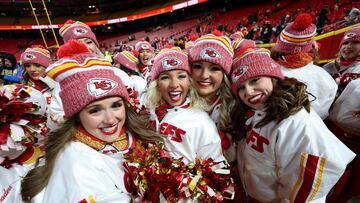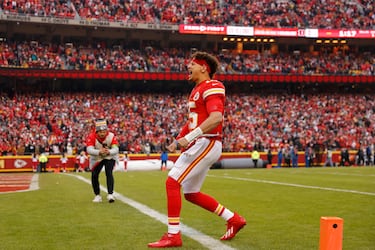The fascinating story behind the Tomahawk Chop: This is why the Chiefs fans favorite chant is so controversial
How and when did the famous chant begin? Where does it come from? And why is it controversial?

I’m not going to get into a debate as to whether or not Arrowhead Stadium is the best atmosphere in the US, I’ll leave that to the people who use flames emojis on social media. But a touchdown celebration with over 75,000 fans using the Tomahawk Chop is a sight to behold.
But where does the gesture come from? Why does it have something to do with a marching band? And what makes the gesture controversial?
Jon Gruden gives his best Tomahawk Chop impression (via @GrudenLovesFB) pic.twitter.com/MyZ9IviCeQ
— BBQ Chiefs (@BBQChiefs) September 3, 2024
A marching band and a return to form
Yes, the origins of the famous chant are perhaps not as thrilling as the scary name might suggest. But they are interesting. The year 1990 is the earliest record of the chant, and they come from the Northwest Missouri State’s marching band, who performed the song in front of the supporters.
It immediately grabbed the attention of all the players and then-Chiefs head coach Marty Schottenheimer and before long the sing became a constant go-to for the Chiefs fans, who were now linking it to a resurgence in their form.
The chop movement, extending your arm out in a chopping motion, was something that had spread around various league team fan groups at that time too, and Kansas City Chiefs fans simply merged the two fads together, creating the iconic chop performance that has become so popular today and synonymous with the team.
The Tomahawk Chop Native American controversy
Unfortunately, despite the huge noise the chant generates, Native American activists have raised awareness of the racist origin of the gesture, which must be considered. Some people see it as a remnant of a representation of Native American culture that should not exist.
“They may not be intentionally making fun of our culture, but that’s what we take it as,” said Rhonda LeValdo to The New York Times, an instructor at Haskell Indian Nations University in Lawrence, Kansas.
The controversy carries over into the whole performance, as Chiefs fans routinely coat themselves in war paint and feathered headdresses, which are typically related to racist caricatures of Native Americans. The chop is performed along with the banging of a fake “Indian” drum, another wink to offensive stereotypes of Native Americans.

‘A horrible stereotype’ of Native Americans
“When I see something like a tomahawk chop, which is derived from television and film portrayals, I find it incredibly offensive because it is an absolutely horrible stereotype of what a Native person is,” Vincent Schilling, associate editor of Indian Country Today, told The Associated Press in 2020.
Related stories
A foam Tomahawk, the Native American weapon, is also sometimes used as a prop to wave during the chant. This was invented by the Atlanta Braves, who received complaints way back in the early 90s when they decided to adopt the prop. “We’ve had a few complaints that the tomahawk is demeaning to native Americans,” said the Braves’ director of public relations, Jim Schultz, to The New York Times in 1991. “But we consider it a proud expression of unification and family.”
According to Reuters, Native American groups are expected to protest the Kansas City Chiefs on Sunday before their all-or-nothing match against the Philadelphia Eagles.